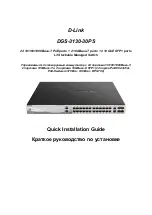
Operation Manual – RRPP
H3C S3610&S5510 Series Ethernet Switches
Chapter 1 RRPP Configuration
1-4
VII. Multi-domain intersection common port
Of the two ports on a node where rings of different domains intersect, the common port
is the one on the primary ring that belongs to different domains at the same time. This
port must not be on a subring. The role of the port is determined by user configuration.
VIII. Timers
The master node uses two timers to send and receive RRPP packets: the Hello timer
and the Fail timer.
z
The Hello timer is used for the primary port to send Health packets.
z
The Fail timer is used for the secondary port to receive Health packets from the
master node.
If the secondary port receives the Health packets before the Fail timer expires, the
overall ring is in health state. Otherwise, the ring transits into disconnect state until the
secondary port receives the Health packet again.
Note:
z
In an RRPP domain, a transit node learns the Hello timer value and the Fail timer
value on the master node through the received Health packets, guaranteeing the
consistency of two timer values across a ring.
z
The Fail timer value must be greater than or equal to 3 times of the Hello timer
value.
1.1.2 RRPP Packets
shows the types of RRPP packets and their functions.
Table 1-1
RRPP packet types and their functions
Type
Description
Health
The master node initiates Health packets to detect the
integrity of a ring in a network.
Link-Down
The transit node, the edge node or the assistant edge node
initiates Link-Down packets to notify the master node the
disappearance of a ring in case of a link failure.
Common-Flush-FDB
The master node initiates Common-Flush-FDB packets to
notify the transit nodes to update their own MAC entries and
ARP entries when an RRPP ring transits to disconnect
state.
















































